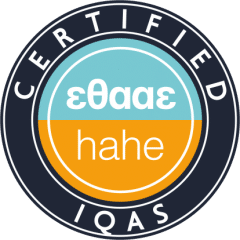The course introduces digital museums analyzing multiple perspectives. It provides a strong theoretical background to the field and progresses with a set of practical exercises that allow the student to experiment with different design issues.
In particular, the course builds around three main domains, the personal domain of the visitor, the physical domain of the museum space and the socio-cultural domain. After building the necessary theoretical background, we focus on technologies that allow cultural communication, personalization of information, social interaction between visitors, and adaptation to the requirements of the physical space. The course also presents cutting-edge technologies for cultural heritage and assists the students in understanding the basic design principles of such applications by addressing both content and technology issues.
Some of the topics covered are:
- Cultural communication (websites, social media)
- Sustainability
- Digital learning in cultural heritage
- Personal characteristics of visitors/users
- Cutting edge technologies (Internet of Things, holograms, Robots, 3D printing, Augmented Reality, Virtual Reality, etc
- Evaluation of cultural technologies
- Museum guides and narration apps
- Collaborative interfaces
- Games and experience gamification
- Hybrid spaces
- Social function of museums
- Interface design
- Creation of digital content



